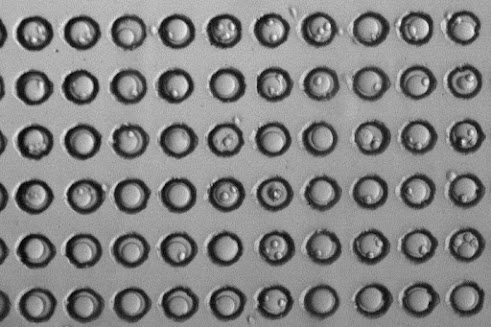Their approach, which mimics the physical forces exerted by immune cells as they crawl over host cells, could help scientists develop more effective cancer immunotherapies.
A cell’s secrets can be divulged by its surface, decorated with tens to hundreds of thousands of molecules that help immune cells determine friend from foe. Some of those protruding molecules are antigens that trigger the immune system to attack, but it can be difficult for scientists to identify those antigens, which often vary across individuals, in the molecular forest.
A team of Stanford scientists led by Polly Fordyce, an Institute Scholar at Sarafan ChEM-H, has developed a new method to faster and more accurately predict which antigens will lead to a strong immune response. Their approach, which was reported in Nature Methods on Sept. 5, could help scientists develop more effective cancer immunotherapies.
T cells, a class of immune cells, crawl along and squish past other cells as they patrol the body, using T cell receptors to molecularly read peptides, or short pieces of proteins – which are cradled within larger proteins called major histocompatibility complexes (pMHCs) that project from cell surfaces. Healthy host cells display an array of pMHCs that do not trigger an immune response, but once T cells recognize disease-indicating peptides, they become activated to find and kill cells bearing these foreign signatures. Understanding how T cells sensitively distinguish these antigenic peptides from host peptides to avoid mistakenly killing host cells has long been a mystery.
















.jpg)